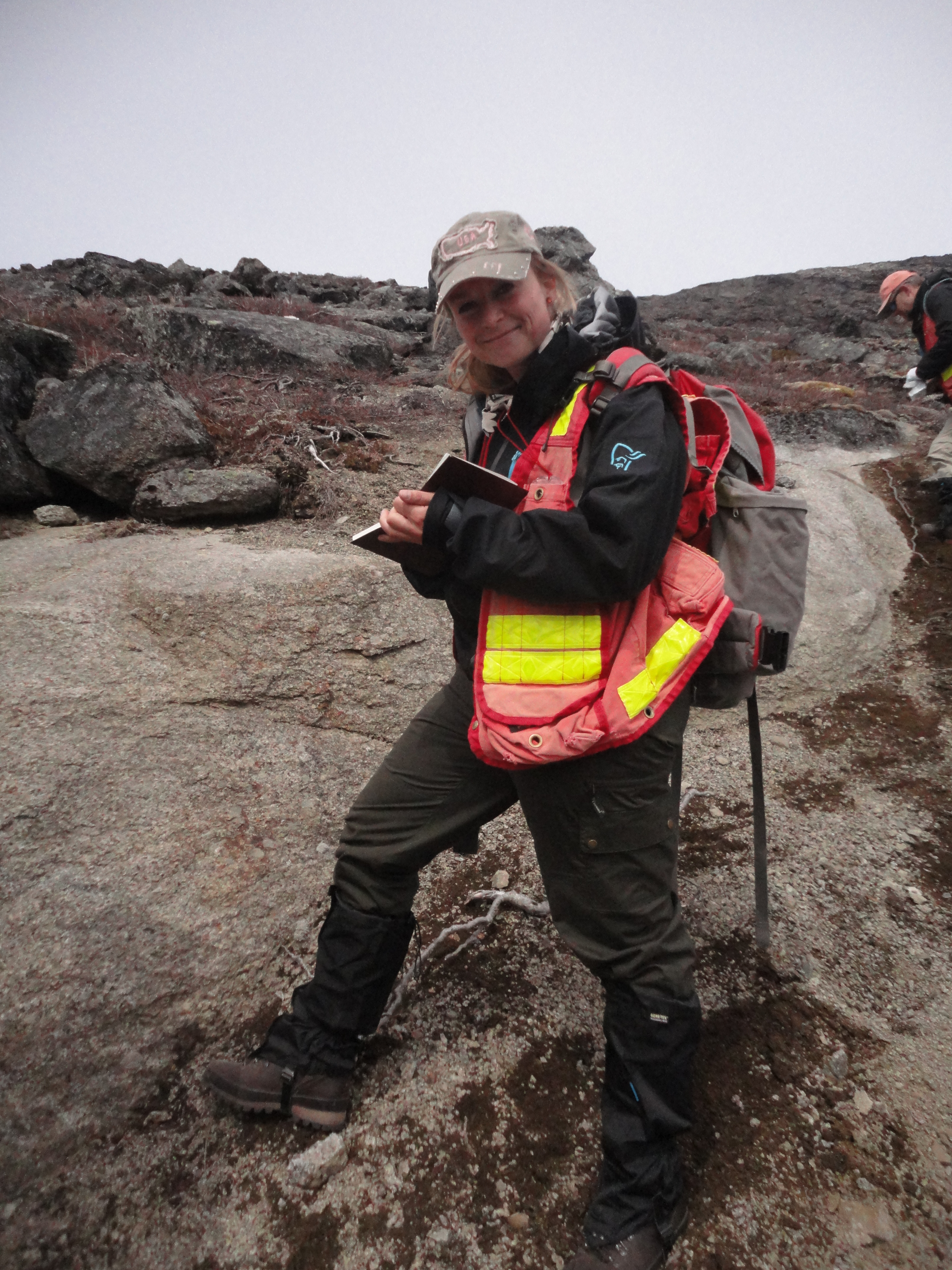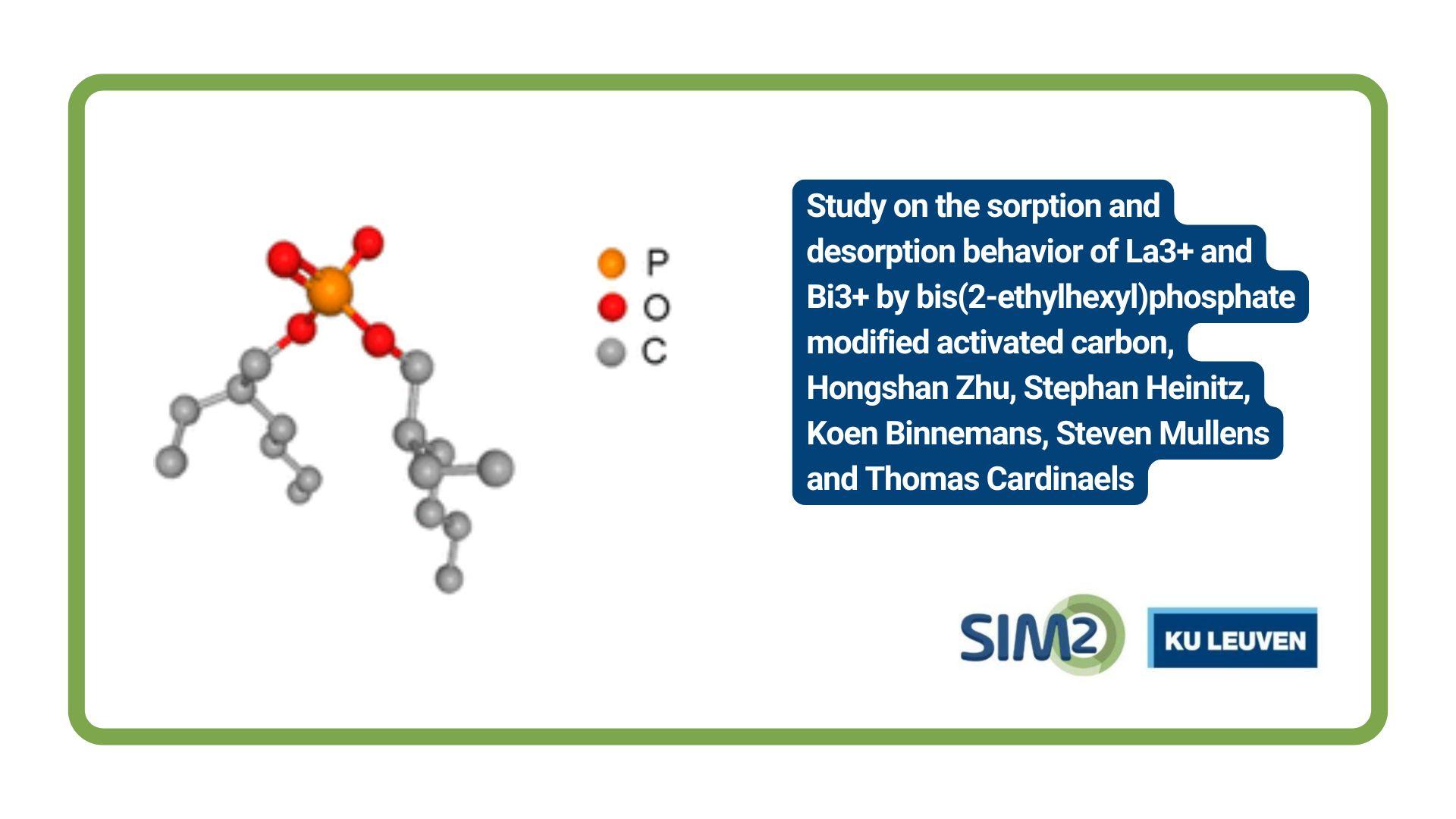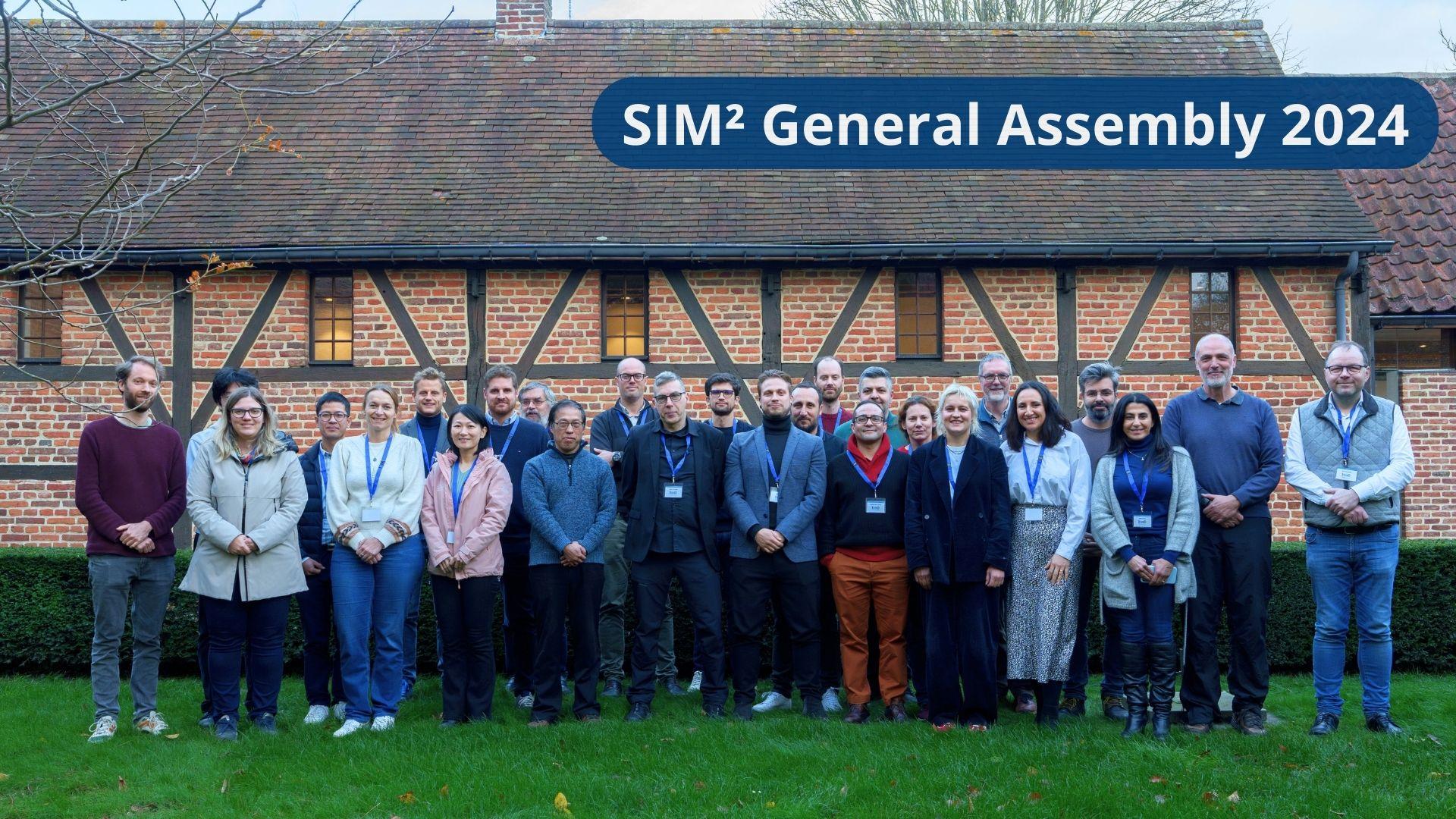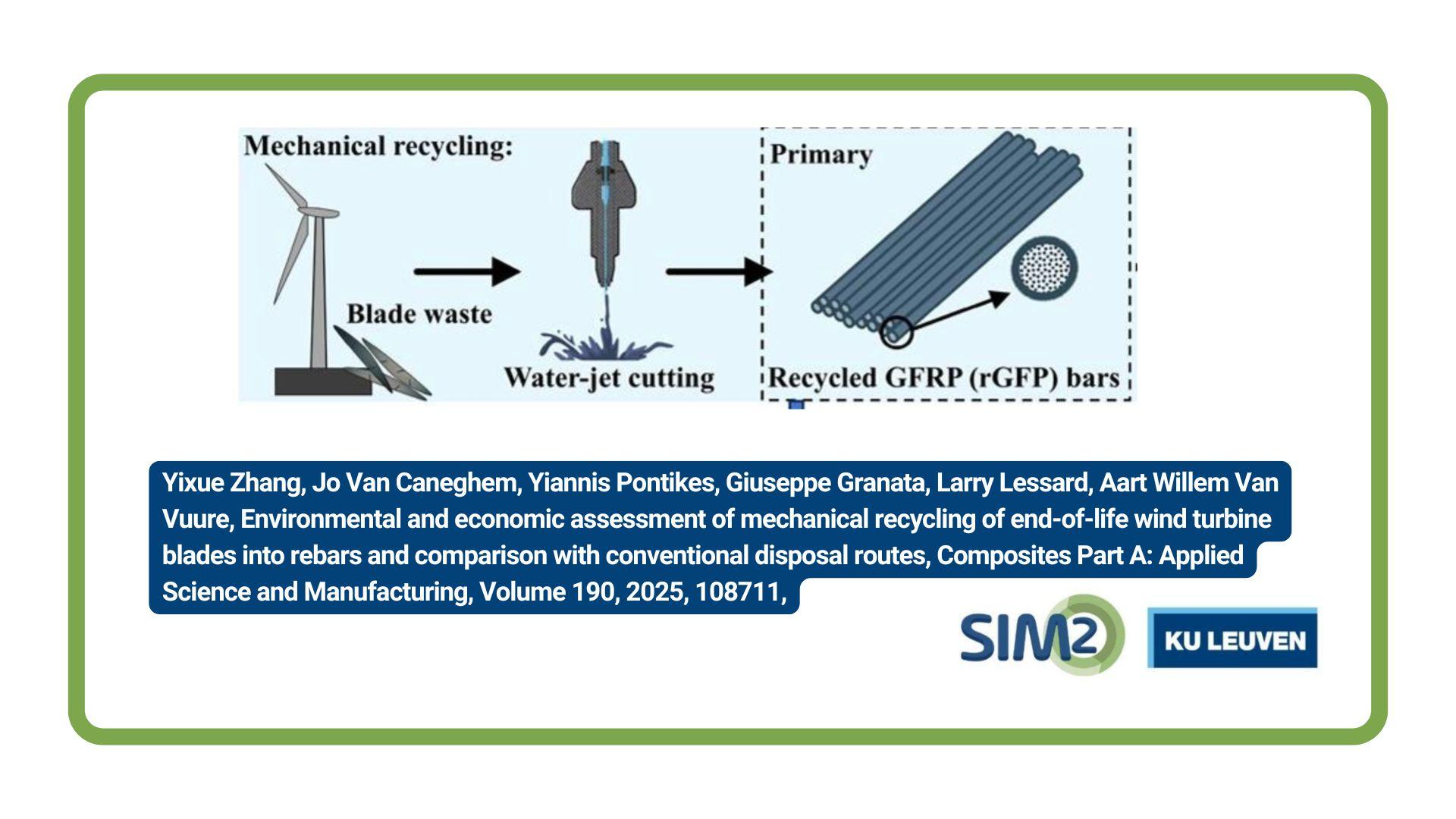With a background in igneous petrology and economic geology, Anouk Borst recently started as an Assistant Professor at KU Leuven, a job she combines with being a Senior Researcher at the Royal Museum for Central Africa. Her research focusses on critical metal deposits formed from highly-evolved magmas and their weathering products. Before coming to Belgium she was a lecturer following a 4-year postdoc position at the University of St Andrews, Scotland. She was recently awarded the RA Howie Best Paper Award 2021 for her work on rare earth elements in eudialyte. In this in-depth SIM² interview you get to know more about her research activities, her personal research journey and her view on the primary mining of rare-earth elements and other critical metals in Europe and Africa.
During the past years you have been working as a Postdoc and Associate Lecturer in Earth Sciences at University of St Andrews in Scotland. What made you decide to become a Professor in Leuven?
Applying for this position in Leuven was a no-brainer. The advertised position aligned very well with my interests and expertise, and the timing was ideal for me. Having lived abroad for 9 years, the possibility to be closer to family and friends [in the Netherlands] was a plus. I visited KU Leuven for a PhD course on rare earth elements some years ago and really enjoyed the city’s atmosphere. There is lot of interesting research ongoing at KU Leuven, and I was already familiar with SIM2, the KU Leuven Institute for Sustainable Metals and Minerals. So all in all, it would be the perfect place to continue my career and follow my ambitions. My temporary position as a Lecturer at St Andrews nicely filled the gap between my postdoc and my appointment in Leuven.
Can you describe what has been the main focus of your research until now and will this change now you start in Leuven?
My research focuses on the formation of peculiar rocks known as alkaline igneous rocks, typically formed in extensional tectonic settings, i.e. where continents were pulled apart. These rocks have economically attractive levels of a wide variety of critical metals, notably rare earth elements, zirconium, niobium, tantalum, lithium and others.
Much of my research focusses on primary resources, specifically rocks that contain a rare-earth bearing mineral called eudialyte, of which we have many tonnages in Europe (more on that below). In my current position, I will start to focus more on Central African deposits, including research on Nb-Ta-Sn-Li-P bearing pegmatites in Rwanda, Burundi and DRC. Pegmatites are coarse-grained magmatic rocks, which contain economically-interesting minerals. They are associated with granite intrusions, but can occur in alkaline rocks as well. Alkaline and granitic pegmatites are both formed by the last bits of magma and fluids after much of it crystallised on the way up through the Earth’s crust. These ‘left-over’ magmas and fluids tend to concentrate lots of rare metals that occur in much lower concentrations in the more common rocks. My work focusses on identifying the ideal processes/ingredients to make primary, secondary, or weathered deposits that we can detect and extract easily and sustainably.
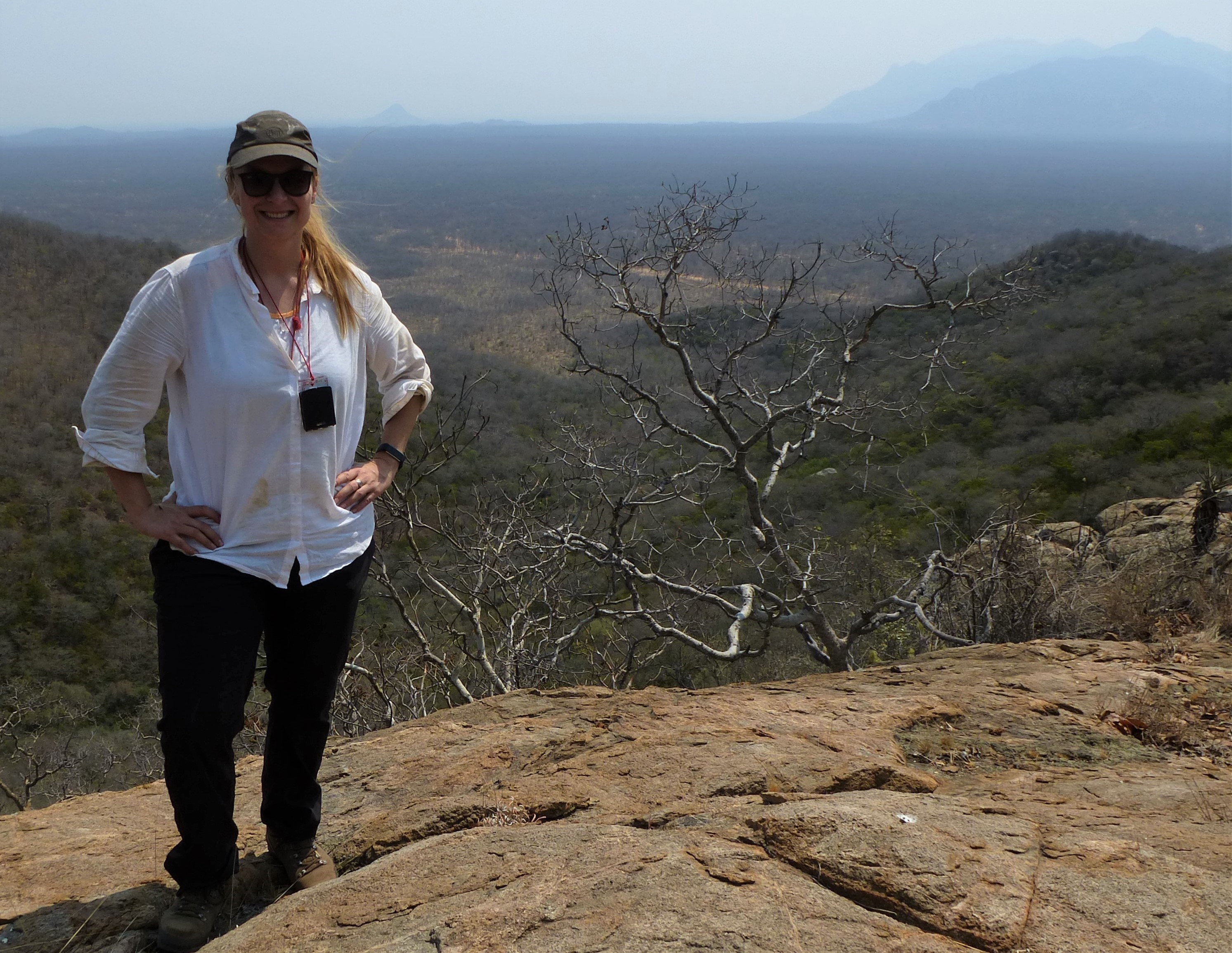
Photo: Anouk Borst exploring for critical metals in collaboration with the University of Agostinho Neto (Luanda, Angola) at the Nejoio complex, Southern Angola (2019)
In 2020 the European Commission published its fourth list of Critical Raw Materials and launched the somewhat Orwellian term of “open strategic autonomy”. With the latter the Commission refers to “the strengthening of the EU’s capacity to pursue its own interests independently and assertively, while continuing to work with partners around the world to deliver global solutions to global challenges.” As a geologist with research links to Africa, how do you think about this term?
It underlines the fact that the EU strives for autonomy in ensuring stable supply chains, while acknowledging that Europe is likely to remain import-dependent for many of the raw materials its industries rely on.
Many people, including politicians and educators outside the resource or economic sector, sometimes don’t seem to realise that mining is a crucial aspect of the clean energy transition. Yet, the willingness to mine, process, or refine the raw materials that underpin all modern technologies – primary or secondary, in Europe or in other places – is still very low and this remains a major issue.
Just look at the discussion around Tata Steel in the Netherlands. Fast action is required to meet the European Green Deal and global climate targets, yet the flipside is that the production of clean energy (and the extraction of metals to make that possible) may come at significant environmental cost elsewhere if not done right.
If we source our metals elsewhere, such as in Africa, we must ensure that the extraction of those resources and the distribution of income is done fairly, safely, sustainably and conflict-free. Mining has to bring economic and social benefits to those countries. We must also carefully consider the carbon-footprint of importing raw materials that are sourced elsewhere.
Do you believe the primary mining of rare earths or lithium will come to fruition in Europe? Where do you see most potential?
Eudialyte is the dominant ore mineral for rare-earths in Europe, with eudialyte deposits in Greenland (Kringlerne deposit, TANBREEZ Ltd) and Sweden (Nora Karr complex, Leading Edge Materials) being of particular interest. Another potential Greenlandic deposit is Kvanefjeld (Greenland Minerals Ltd), which mineral ore is steenstrupine and can be mined for REE, Zn, and U.
If either one of these deposits is to be mined for REE, it could satisfy much of Europe’s demand for years to come. However, there are many challenges in taking these projects to production.
Firstly, REE extraction from eudialyte and steenstrupine has not yet been demonstrated at industrial scale. Although possible – as shown by KU Leuven metallurgists and others – the economics of building and upscaling processing plants in Europe is complex, and it is possible that the concentrates will still be shipped and processed in China.
Secondly, environmental concerns and the social licence to mine in these areas are serious barriers to overcome, as was clear from the recent Greenlandic elections. Only time will tell if these projects can eventually move forward or if we continue to import REEs from other places, including China, the USA, and Australia.
Lithium is a bit different. There are various interesting lithium projects ongoing in Europe, including Portugal and the UK, some of those with real potential. For example, Cornwall has traditionally been a mining region and so the public acceptance to local mining operations is greater than in places where people have traditionally relied on other sources of income.
Photo: Anouk studying steenstrupine-bearing rocks from the Kvanefjeld REE-U-Zn deposit, Greenland, during her PhD (2013)
Linked to the previous question, do you see major Social License to Operate issues with respect to primary mining of rare earths, lithium etc. in Europe? How do they compare with such issues in other continents such as Latin America, Asia, or Africa?
Yes, this is absolutely crucial. The Social License to Operate is more challenging in Western countries and places where mining does not bring “immediately-visible” economic benefits to the local communities, but where it is perceived as a threat to people’s homes and livelihoods. These are valid concerns anywhere and must be taken into account in all exploration projects.
What is your advice to EU Policymakers to develop “a path towards greater security and sustainability”?
That’s a tough question. The path is long and requires incredibly smart, innovative, and interdisciplinary solutions. First of all, I think it’s essential to increase public awareness around raw material supply chains, starting in early education, and to communicate responsible-sourcing options to consumers. “Responsible consumerism” seems to be a well-known concept for plastics and the fashion industry, but this concept hasn’t really translated to other products such as cars and electronics.
If Europe is not willing or able to mine its resources locally, we must reflect on our usage and consumption. If we source our raw materials elsewhere, we have a responsibility to make sure they were extracted or produced to similar standards as if they were produced in Europe.
We cannot pretend to be carbon-neutral if the neodymium in our EV’s and wind turbines leaves a major carbon footprint elsewhere.
Over the past years you have published numerous peer-reviewed papers. Which paper of yours are you particularly pleased with?
I’m quite proud of all papers – each one was hard work and team effort. Personally, the first paper to come out of my PhD (Borst et al., 2016, MinMag) is an important one, describing complex replacement textures in eudialyte ores, as it sparked various papers and projects afterwards. I’m also quite pleased with a recent paper published in Nature Communications, where we use synchrotron methods to show how REE are adsorbed to clay minerals in weathering profiles in Madagascar and China. This was the result of a long team effort within the SOSRARE consortium that I was a part of at St Andrews.
Do you have any advice for PhD students in terms of publishing papers or going about in terms of their Phd work?
Don’t be afraid to ask for feedback on your texts early and often – don’t keep polishing, perfecting and rewording sentences endlessly before sending it out to supervisors or co-authors to read. The same goes for figures. Have them checked, analysed, check if the message is clear and if the main structure and storyline are there first. They might tell you to delete entire sections or all the beautiful pieces of artwork you’ve been working on for weeks. I probably should keep giving this advice to myself as this is a common pitfall of my own.
On a more personal level, are there any game-changing moments in your research career? I am referring to moments which made you fundamentally rethink your research focus and/or strategy?
I can’t think of specific game-changing moments perse, but what has been really important to me and my career path was to work with people that believed in me. In moments of self-doubt – of which I’ve had plenty – a good mentor can really bring out the best in you, motivate you, and make you push harder, challenge your own ideas, or encourage you to go for things you didn’t think were possible. Such as applying for jobs or grants you thought you’d never get. I wouldn’t be here without all the great supervisors/mentors I’ve had over the years, from BSc to MSc to PhD to Postdoc – so thanks to all of them! Hopefully, I can provide that bit of inspiration to the next generation of geoscientists. We need them.
To close off, what is the strangest talent you have?
Well, I can whistle on all combinations of 2 fingers. More a skill than a talent, haha. I used to go to many concerts and festivals when I was younger. Occasionally comes in handy in the field as well.
Thank you for this interview. We wish you all the best in your research endeavours.
[Interview: Peter Tom Jones; Credits photo: © Anouk Borst – Background on featured image: Anouk Borst holding up a eudialyte-rich syenite from the Pocos de Caldas Alkaline Complex, Brazil, with potential deposits of REE-Zr-U-Th-P (2017)]
Biography Anouk Borst
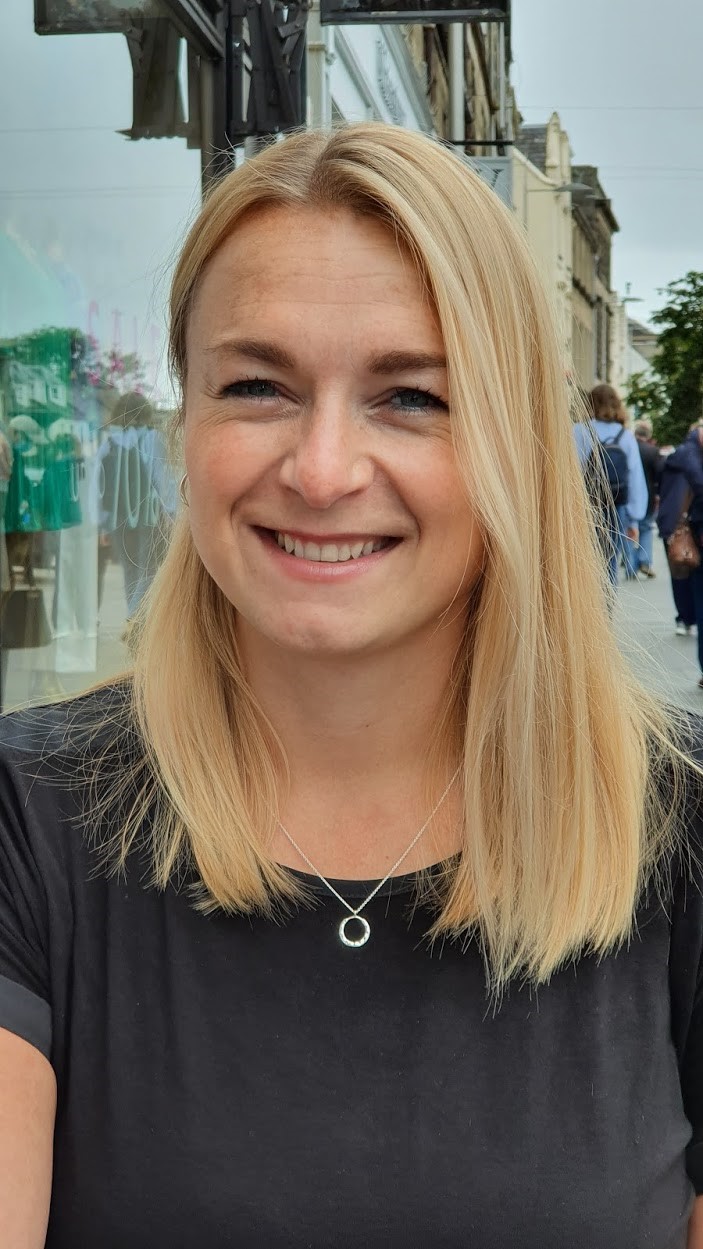 Anouk Borst is Assistant Professor at KU Leuven and Senior Researcher at the Royal Museum for Central Africa. She holds a PhD in igneous petrology and economic geology from the University of Copenhagen, where she was based at the Geological Survey of Denmark and Greenland. She obtained her BSc and MSc degrees in Geology at the VU University Amsterdam.
Anouk Borst is Assistant Professor at KU Leuven and Senior Researcher at the Royal Museum for Central Africa. She holds a PhD in igneous petrology and economic geology from the University of Copenhagen, where she was based at the Geological Survey of Denmark and Greenland. She obtained her BSc and MSc degrees in Geology at the VU University Amsterdam.
Her research focusses on critical metal deposits formed from highly evolved magmas and their weathering products. Before coming to Belgium she was a lecturer following a 4-year postdoc position at the University of St Andrews, Scotland. She was recently awarded the RA Howie Best Paper Award 2021 for her work on rare earth elements in eudialyte, and received the Mineralogical Society’s Max Hey Medal 2021 for outstanding contributions in the fields of mineralogy and petrology.
Some of Prof. Anouk Borst’s most cited papers in the field of geology of critical metals
- Sokół, K., Finch, A.A., Hutchison, W., Cloutier, J., Borst, A.M, & Humphreys, M. Quantifying metasomatic HFSE-REE transport from alkaline magmas. Geology (2021, In Press).
- Hutchison, W., Finch, A. A., Borst, A. M., Marks, M. A. W., Upton, B. G. J., Zerkle, A. L., Stüeken, E. E., & Boyce, A. J. (2021). Mantle sources and magma evolution in Europe’s largest rare earth element belt (Gardar Province, SW Greenland): New insights from sulfur isotopes. Earth and Planetary Science Letters, 568, 117034. https://doi.org/10.1016/J.EPSL.2021.117034
- Borst, A. M., Smith, M. P., Finch, A. A., Estrade, G., Villanova-de-Benavent, C., Nason, P., Marquis, E., Horsburgh, N. J., Goodenough, K. M., Xu, C., Kynický, J., & Geraki, K. (2020). Adsorption of rare earth elements in regolith-hosted clay deposits. Nature Communications, 11(1). https://doi.org/10.1038/s41467-020-17801-5
- Borst, A. M., Finch, A. A., Friis, H., Horsburgh, N. J., Gamaletsos, P. N., Goettlicher, J., Steininger, R., & Geraki, K. (2019). Structural State of Rare Earth Elements in Eudialyte-Group Minerals. Mineralogical Magazine, 1–49. https://doi.org/10.1180/mgm.2019.50 (Howie Award 2021, Mineralogical Society)
- Borst, A. M., Waight, T. E., Finch, A. A., Storey, M., & Roux, P. J. Le. (2019). Dating agpaitic rocks: A multi-system (U/Pb, Sm/Nd, Rb/Sr and 40Ar/39Ar) isotopic study of layered nepheline syenites from the Ilímaussaq complex, Greenland. Lithos, 324–325, 74–88. https://doi.org/10.1016/J.LITHOS.2018.10.037
- van de Ven, M. A. J., Borst, A. M., Davies, G. R., Hunt, E. J., & Finch, A. A. (2019). Hydrothermal Alteration of Eudialyte-Hosted Critical Metal Deposits : Fluid Source and Implications for Deposit Grade. Minerals, 9(422), 1–23. https://doi.org/10.3390/min9070422
- Borst, A. M., Friis, H., Nielsen, T. F. D. D., & Waight, T. E. (2018). Bulk and Mush Melt Evolution in Agpaitic Intrusions: Insights from Compositional Zoning in Eudialyte, Ilímaussaq Complex, South Greenland. Journal of Petrology, 1–23. https://doi.org/10.1093/petrology/egy038
- Borst, A. M., Friis, H., Andersen, T., Nielsen, T. F. D.., Waight, T. E., & Smit, M. A. (2016). Zirconosilicates in the kakortokites of the Ilímaussaq complex, South Greenland: Implications for fluid evolution and high-field-strength and rare-earth element mineralization in agpaitic systems. Mineralogical Magazine, 80(1). https://doi.org/10.1180/minmag.2016.080.046
Want to know more about SIM²?
SIM² KU Leuven is the KU Leuven Institute for Sustainable Metals and Minerals (SIM² in short). SIM² is one of the official KU Leuven Institutes that were endorsed by the KU Leuven Academic Council. SIM² has more than 240 members, coming from a wide range of (interdisciplinary) research groups and departments at KU Leuven. SIM²’s missions is “to develop, organise & implement problem-driven, science-deep research & future-oriented education, contributing to the environmentally friendly production & recycling of metals, minerals & engineered materials, supporting (…) a climate-friendly, circular-economy”.
- Read more in this featured article in Geniaal.
- Follow SIM² on LinkedIn: https://www.linkedin.com/company/18118889
- Interviews with other SIM² colleagues: https://kuleuven.sim2.be/meet-our-colleagues/
.png)



